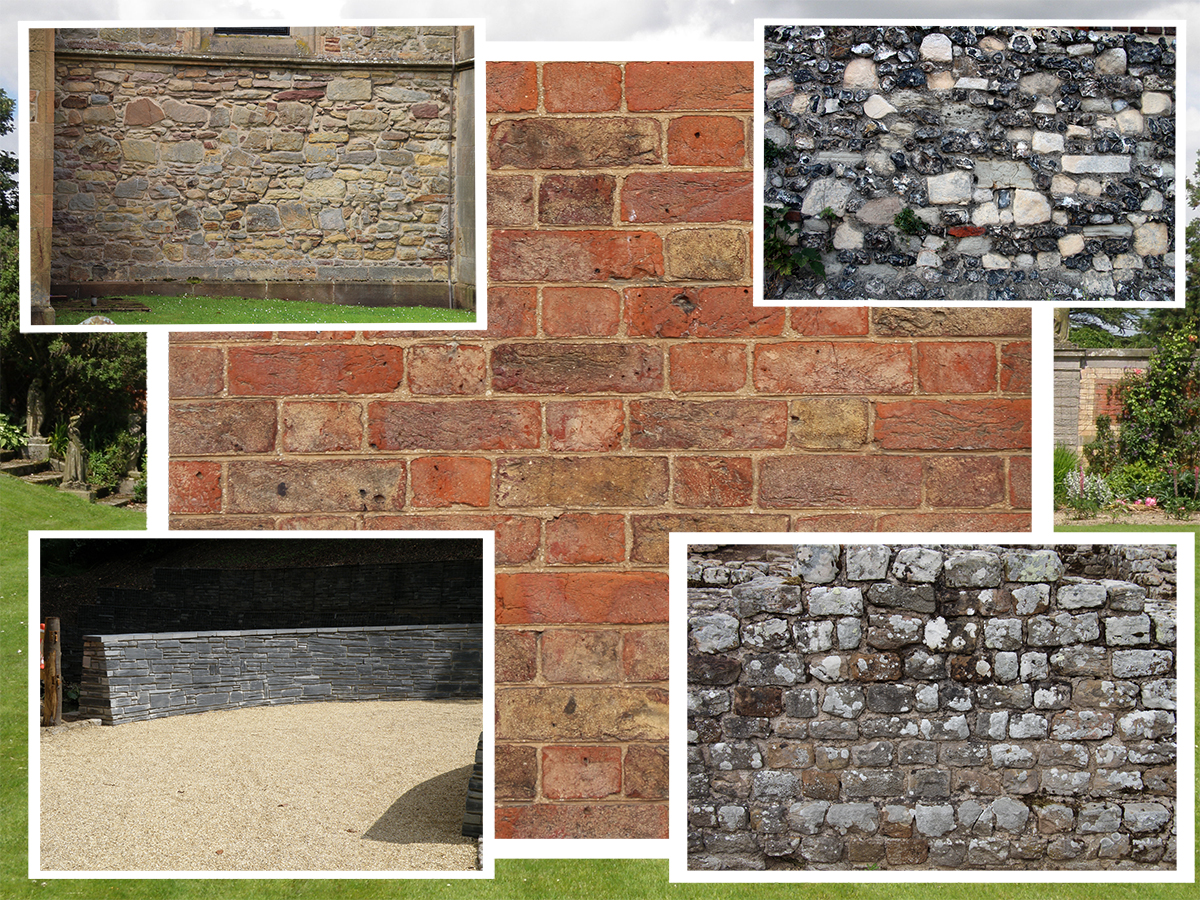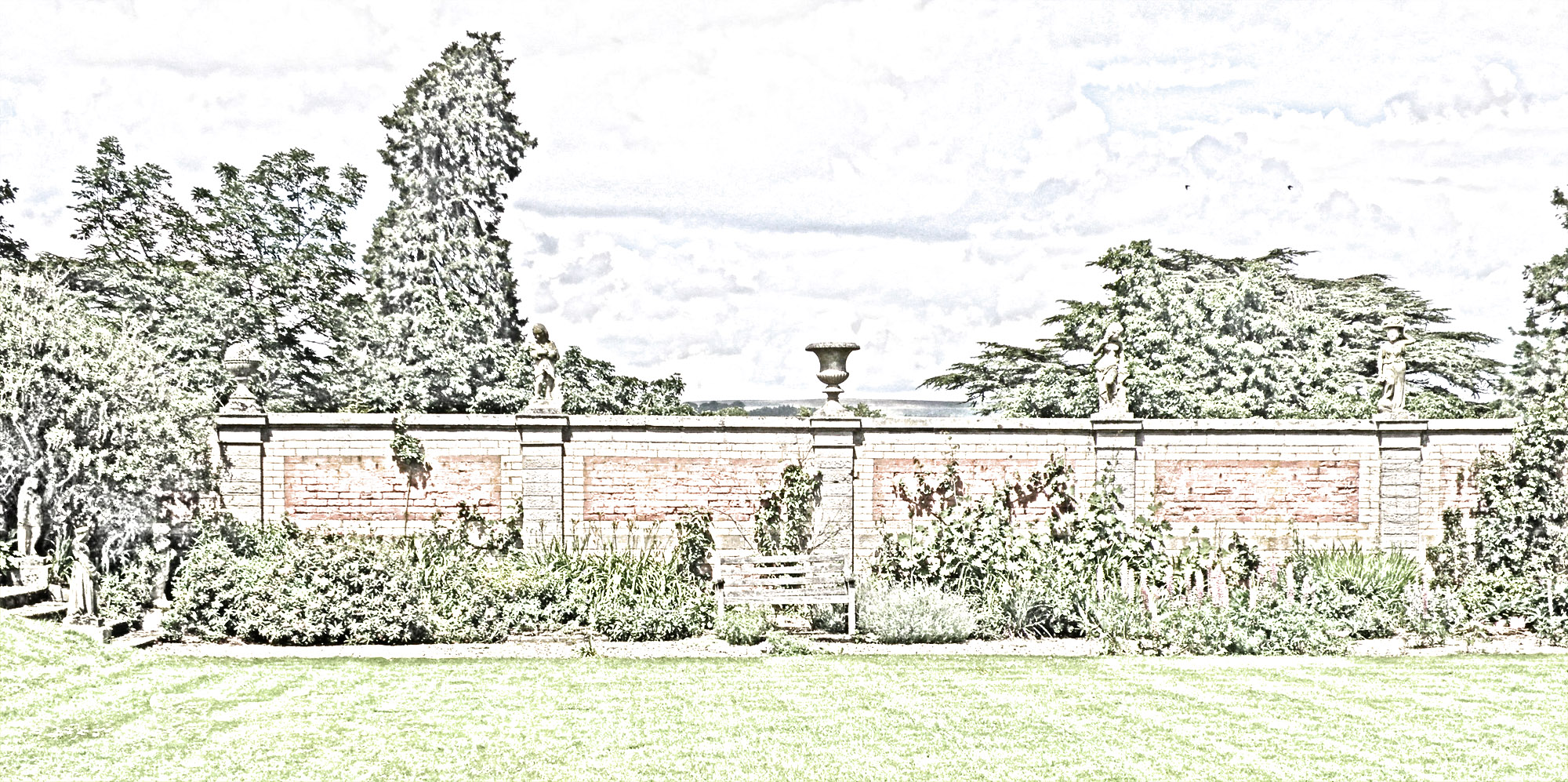Historically walls have tended to be built from the nearest suitable materials and this has to very individual regional building styles. Since the advent of modern mass transport this has begun to be broken down; except where local planning restrictions have protected it. That is not to say the local traditional building style has to be followed slavishly, if any is discernible in the first place, as often the use of a contrasting material can be very effective. Making a clear demarcation between the old and new; always fair better than a poor match.
Traditionally walls have been associated with bricks or stone pieces with a mortar between them to stabilise the structure. As a building technology this is a very old one; and was well established by the time the Romans combined this with the arch allowing them to create their major engineering feats. The individual units that create a wall tend to be small, partly from practical considerations and partly from aesthetic ones. The small individual units imparts great flexibility into any design for a wall, allowing the same wall to be both straight and curved at different points. Its appearance can also be uniform if the same material is used throughout or broken up if the sizes and/or colours of the materials are varied.
Walls though don’t have to be brick or stone; the material used for their construction is only limited by the designer’s imagination. Concrete, timber, recycled bottles and wire cages filled with cobbles have all been used to make walls. The choice of materials dramatically alters the effect wall will have within the garden, as will its detailing and height.
When choosing the material to build a wall the range of possibilities is vast, with hundreds of different bricks alone to consider. When deciding on a walling material a number of factors have to be taken into consideration:
What materials have already been used?
How much are you prepared to spend on the wall?
What is the danger of frost damage?
How solid does it need to be visually?
How high does it need to be?
What if anything does it have to support?
How important is it to the appearance of the garden?
What finished appearance is wanted?
What shape is it going to be?
What is the purpose of the wall?
While this list won’t make the selection for you; it will narrow down the search, help focus your mind and hopefully broaden your mind to less obvious possibilities.




